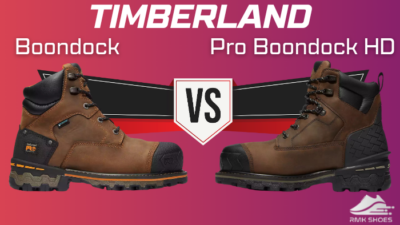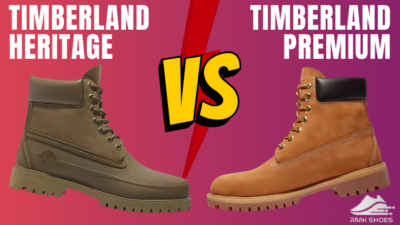The iconic yellow boot from Timberland symbolizes both rugged practicality and trendy style.
But the boot comes in two different versions — single sole and double sole.
Both options offer the classic style, but which is better in terms of comfort, durability, support, and overall look?
In this article, I’ll break down each sole’s key features, comfort levels, and ideal uses, helping you choose the perfect pair of Timbs for your next adventure.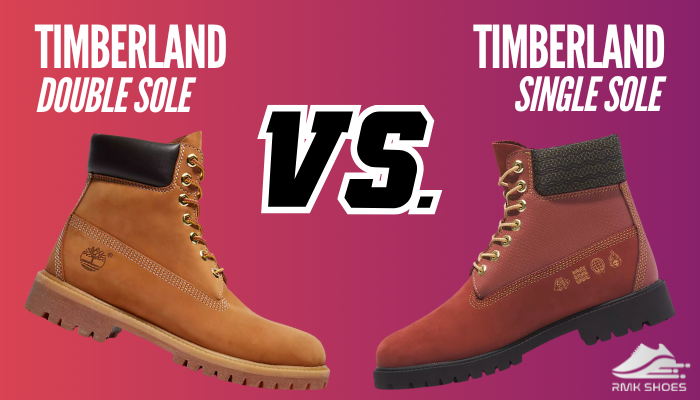
Let’s begin!
A Brief Overview of the Timberland Single Sole vs Double Sole Boots
Timberland boots, known for their durability and iconic style, come in two sole varieties: Single and Double. Each offers distinct characteristics to consider when choosing your perfect pair.
Timberland Single Sole Boots: A Simpler Approach
Found in the Basic models, the single soles are lighter and thinner. They provide a more flexible and agile feel. They’re ideal for everyday wear, offering good traction on pavement and light trails.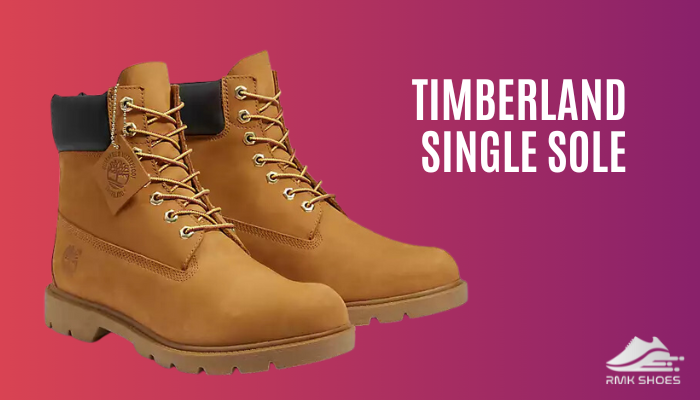
However, the single sole Timbs are not the best choice for demanding activities or harsh environments due to reduced durability.
Timberland Double Sole Boots: Built for Toughness
As the name suggests, these soles feature two stacked layers in the Premium Timberland line. This construction provides superior durability, insulation, and traction. They are perfect for tackling more challenging terrains and weather conditions.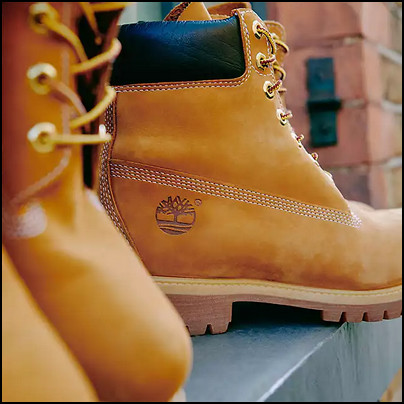
However, the double sole Timberlands can be slightly heavier and less flexible than single soles.
For more differences, check out our in-depth article on Timberland Heritage vs. Premium.
Let’s get into the nitty-gritty of the Timberland boot sole types.
Characteristic Comparison between Double and Single Sole Timberlands
Both Timberland soles have excellent features. Understanding their characteristics enables you to make informed decisions that match your style and comfort preferences.
| Feature | Timberland Double Sole Boots | Timberland Single Sole Boots |
|---|---|---|
| Construction | Seam-sealed construction, superior waterproofing | Cement construction, sleek and simplified look |
| Sole Structure | Two separate, stacked soles | Single, thicker sole |
| Insole | Anti-fatigue removable footbed, high-density foam | OrthoLite® non-removable insole |
| Comfort & Support | More comfortable with arch support | Less comfy |
| Weight | Heavier | Lighter |
| Durability | More durable | Less durable |
| Traction | Better traction due to deeper lugs | Less grippy |
| Shock Absorption | More shock absorption, reducing impact on feet and joints | Less shock absorption feels harsher on impact |
| Warmth | More insulating | Less insulating |
| Flexibility | Less flexible due to thicker construction | More flexible, offering a better range of motion |
| Style | Classic, chunky look | Sleeker, more modern look |
| Price | More expensive | Less pricey |
| Best for | Hiking, heavy-duty work, cold weather | Everyday wear, light hiking, milder climates |
Major Differences of Double Sole vs Single Sole Timberland Boots
Recognizing the differences between single sole and double sole Timbs is crucial for those searching for the perfect footwear. Essential factors like materials, support, durability, and prices shape your overall experience.
Below, I’ve highlighted the primary distinctions between double sole and single sole Timberland boots.
Construction Quality
By experiencing both Timberland Premium and Basic boots featuring the double sole & single sole, respectively, I can tell they’re built differently.
The Timberland double-sole boots rock the seam-sealed construction. It means that the seams of the shoes are sealed up tight to keep water out.
It’s a big deal because I hate when my feet get all soggy and wet, especially if I’m trudging through mud or snow. With these boots on, I don’t have to worry about that at all.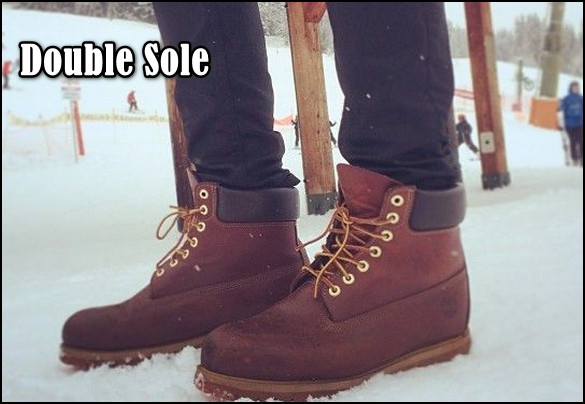
On the flip side, we got the Timberland single-sole boots with cement construction.
These boots are more about that sleek and streamlined look. They’re put together by cementing the sole to the upper part of the boot. It’s a solid construction method, no doubt, but it doesn’t quite match up to the waterproofing power of the double-sole boots.
So, if I had to pick a winner, I’d go with the Timberland double-sole boots, hands down.
Insole Features
Timberland double sole’s insole features an anti-fatigue removable footbed, and it is a game-changer.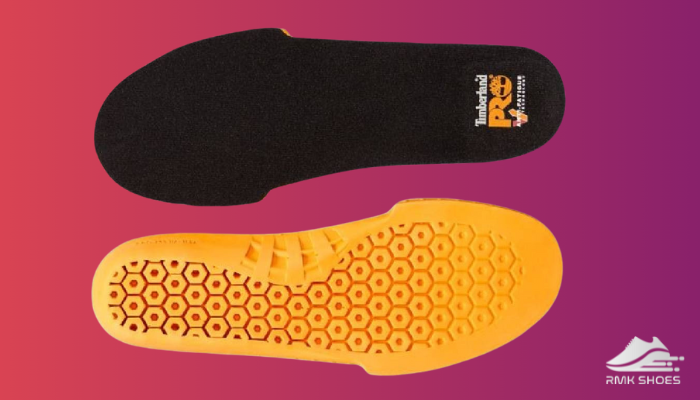
When I’m out all day, whether hiking or just long walks around the city, my feet feel way less tired compared to the single-sole boots. It’s like they have this extra cushioning that absorbs the shock and keeps my feet feeling fresh.
If you are wondering how good Timberlands are for walking all day, this article will answer all your questions.
And the fact that the double-soles’s insole is removable means I can swap it out with my orthotics if I need to.
Also, the high-density removable foam insert provides some serious support. I can feel it molding to the shape of my foot, giving me that personalized comfort that’s hard to find in other boots.
Now, onto the Timberland single sole’s insole.
The insole in these boots is thin and low-density OrthoLite® foam, which means it’s not doing much in support. I can feel little pebbles or bumps on the ground beneath my feet, which gets uncomfortable after a while.
Plus, the fact that it’s non-removable means I can’t do much to improve the situation.
So, if I had to pick a winner, it’s definitely the Timberland double-sole boots.
Outsole & Traction
Let me break down the outsoles of the double and single sole Timberlands.
The double-sole Timbs have polyurethane rubber outsoles with deep rubber lugs that stick out. They’re two-toned, which gives them a rugged look.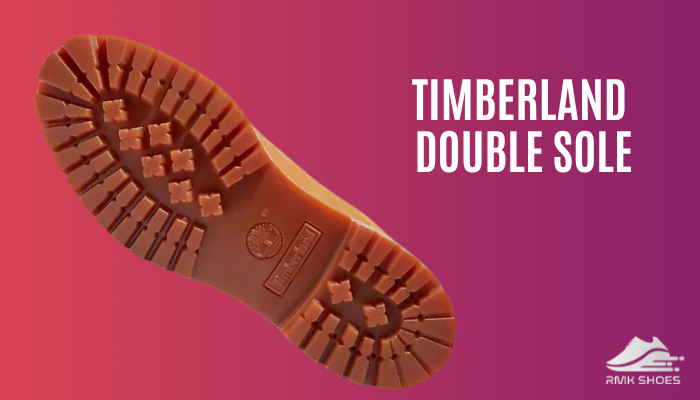
When I wore these, I could immediately feel the difference in grip. It’s like my feet were glued to the ground, making these Timberland boots good for hiking.
On the other hand, the single sole has a more modern tread pattern, with this butterscotch-colored sole that looks pretty slick.
These outsoles are all about being slip, oil & abrasion-resistant, which is great for city life and casual outings.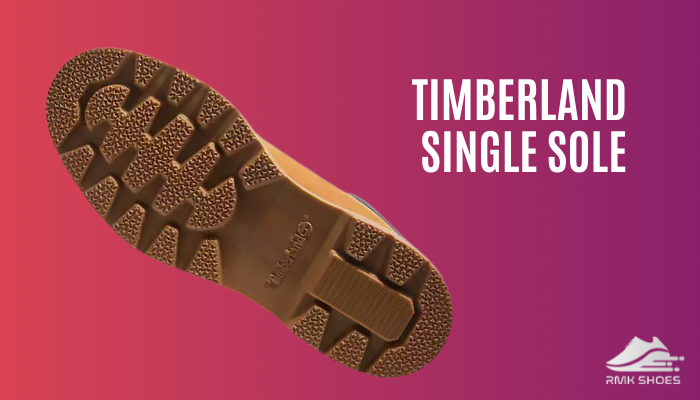
But I found them decent in terms of traction, not on the level of the double-sole Timberlands.
Now, if I had to pick a winner, I’d definitely go with the Timberland double sole.
Comfort & Support
The Timberland Double Sole boots are super comfy.
They feel custom-made for my feet right out of the box. And the best part is you don’t need any extra inserts or orthotics. Timberland graciously provides a very comfortable insole with Anti-fatigue technology.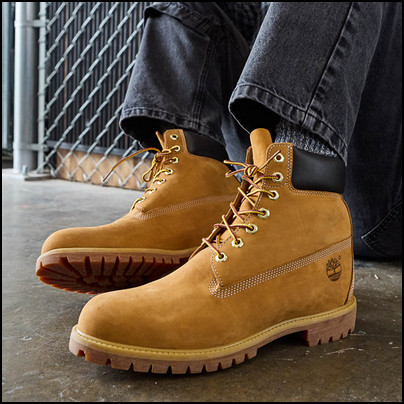
But no worries if you have specific foot issues like flat feet or plantar fasciitis.
You can still insert your personal orthotics, and these boots will still feel amazing.
Plus, this orange insole gives your arches some decent support, especially if you’re on your feet all day, like me.
Now, onto the Timberland Single Sole boots.
Let me be honest: these boots are less comfy than the double-sole editions.
Sure, they’re not terrible, but they definitely don’t have that satisfaction when you first put them on. The comfort level is a bit limited compared to the double-sole ones.
Therefore, the best comfy shoe award goes to Timberland double-sole boots.
Durability of the Soles
Durability is a significant concern when investing in a pair of Timberlands, and understanding the differences between single and double soles in this regard is crucial.
The double-soles are built like tanks. Seriously, they can last through anything.
The outer rubber outsole’s robust lugs combat abrasion from various terrains, while the Eva foam midsole acts as a shock absorber, mitigating damage from impacts.
The Timberland double sole boots are practically indestructible. I’ve kicked rocks and trudged through mud, and those boots barely have a scratch.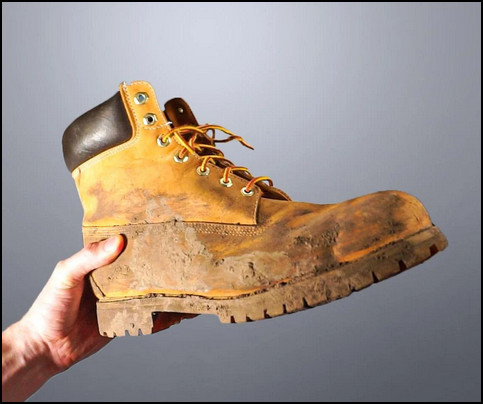
Now, onto the single-sole Timbs.
Don’t get me wrong, they’re still great boots, but they’re more like your reliable daily driver.
They’re made with high-quality materials like Vibram rubber, so they’re durable for sure, but not on the same level as the double-soles.
However, With regular maintenance and timely resoling, they’ll stick around for a while.
Here’s how you can easily resole Timberland boots.
Overall, if you’re looking for boots with an excellent lifespan, go for the double-sole Timberlands.
Flexibility & Support
Having experienced both the Timberland double-sole and single-sole boots, the Flexibility & Support aspects significantly influenced my preferences.
The double sole in the Timberland Premium 6-inch boots impressed me with its robust construction. These boots offer enhanced cushioning that absorbs impacts remarkably well. It made long days on my feet and traversing uneven terrains surprisingly comfortable.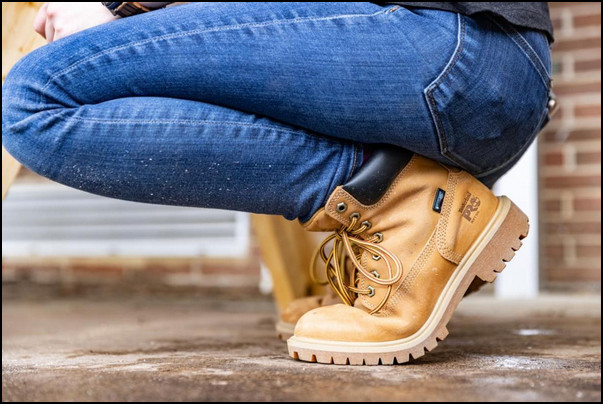
However, the trade-off was reduced flexibility, especially in the forefoot, making activities like driving or light hiking feel stiff.
On the other hand, the single sole in the Basic Timberland boots provided a more nimble feel with greater flexibility, making it ideal for everyday wear or agile activities.
The thinner profile, though, meant less shock absorption and support. I noticed this, particularly during long treks or uneven surfaces, where the impact comfort wasn’t as noticeable.
So, the Timberland double-sole emerges as the winner for me. The added support and cushioning outweigh the slightly reduced flexibility.
Style & Aesthetics
When it comes to style and aesthetics, the choice between Timberland’s double and single soles boils down to a battle between ruggedness and sleekness.
With its thick, stacked construction, the double sole Timberlands exudes a bold, functional vibe. The classic Timberland look is favored for its imposing presence and nod to the brand’s workwear heritage.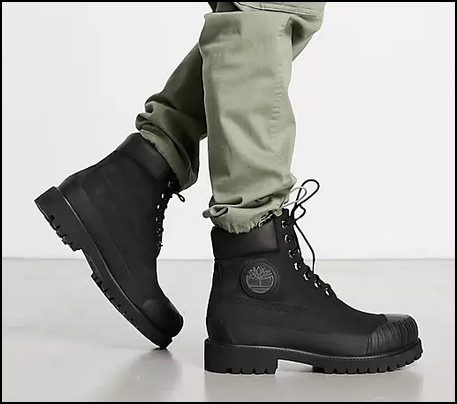
However, this thickness can sometimes feel clunky, especially on slimmer physiques.
On the other hand, the single sole offers a more streamlined silhouette.
It retains the iconic Timberland design elements but with a lighter, more contemporary feel. It makes the boots versatile, easily transitioning from casual streetwear to even semi-dressy outfits.
Ultimately, the better choice depends on your personal style preferences.
Price & Value for Money
Timberland double-sole boots cost around $198, about $25-$35 more than their single-sole counterparts.
But are these Timberland boots worth the money?
While single-sole boots are cheaper upfront, they lack the durability and traction of the double-sole’s thicker, sturdier design.
It makes the double-sole Timbs a better long-term investment. They offer more value for your money despite the higher initial cost.
Pros and Cons between Timberland Double Sole and Single Sole Boots
By assessing the advantages and disadvantages of each Timberland sole, you can choose the one that aligns with your style, performance goals, and comfort preferences. It ensures that your selected boot is an ideal fit for your requirements.
Let’s explore the strengths and weaknesses of both single sole and double sole Timbs.
Timberland Double Sole Boots
- »Keeps feet dry in wet conditions.
- »Comfortable insole foam with Anti-fatigue technology.
- »Deep lug outsoles provide superior grip.
- »Arch support and shock absorption for extended wear.
- »Robust construction.
- »More valuable for superior durability.
- »Enhanced cushioning.
- »Slightly bulky construction.
- »More expensive.
- »Less Flexible.
Timberland Single Sole Boots
- »Sleek Design.
- »Urban-friendly outsole.
- »Lower upfront cost compared to double sole boots.
- »Easily transitions from casual to semi-dressy.
- »Limited waterproofing.
- »The low-density insole lacks support.
- »Less comfortable than double sole boots.
- »Requires regular maintenance for a prolonged lifespan.
- »Lacks support and shock absorption.
Timberland Single vs. Double Sole: Which Boot Should You Get?
After thoroughly analyzing both Timberland double-sole and single-sole boots, the double-sole emerges victorious for most users.
They excel in crucial areas like waterproofing, comfort, durability, and traction, offering exceptional value despite the slightly higher cost.
However, single-sole boots will be a decent alternative if you prioritize sleekness and affordability. But be prepared for compromises in comfort and performance.
Ultimately, the best choice depends on your individual needs and preferences.
FAQs
What is the difference in Timberland soles?
Timberland soles vary depending on the boot type and purpose. Classic boots often have thinner rubber soles for everyday wear. Premium boots have a thicker, multi-material sole for better comfort and support. Timberland Pro boots have even more rigid soles, deeper treads for work environments, and safety features like steel toes.
What type of Timberlands do New Yorkers wear?
New Yorkers favor two main Timberland styles: the classic 6-inch Premium Boot in wheat or yellow and the Earthkeepers® 6-inch Boot in similar colors. Both offer warmth, waterproofing, and durability for navigating the city’s unpredictable weather and diverse terrains.
Timberland Basic vs. Premium: Which Boot Should You Get?
Deciding on Timberland Basic or Premium depends on comfort and budget. Both have a classic look and waterproof nubuck leather. However, Premium has a thicker, more comfortable sole, extra support, and a padded ankle collar. The Basic is more budget-friendly but lacks durability and comfort.
What is the difference between Timberland Pro boots and regular?
Regular Timberlands are for everyday wear, focusing on comfort and style. Timberland Pros are built for tough jobs, with features like safety toes, electrical hazard protection, and puncture-resistant soles.
Which type of sole is best for shoes?
For dress shoes, sleek leather soles offer style and breathability, while rugged rubber soles on hiking boots provide superior traction and durability. For everyday wear, versatile EVA soles balance comfort and grip.

